two limerick oysters
Bildraum 07, 2024

situation b7-9, 2024, freigelegte Gipskartonplatten, teilweise oxidiertes und brüniertes Messing, brüniertes Kupfer, brünierter Stahl
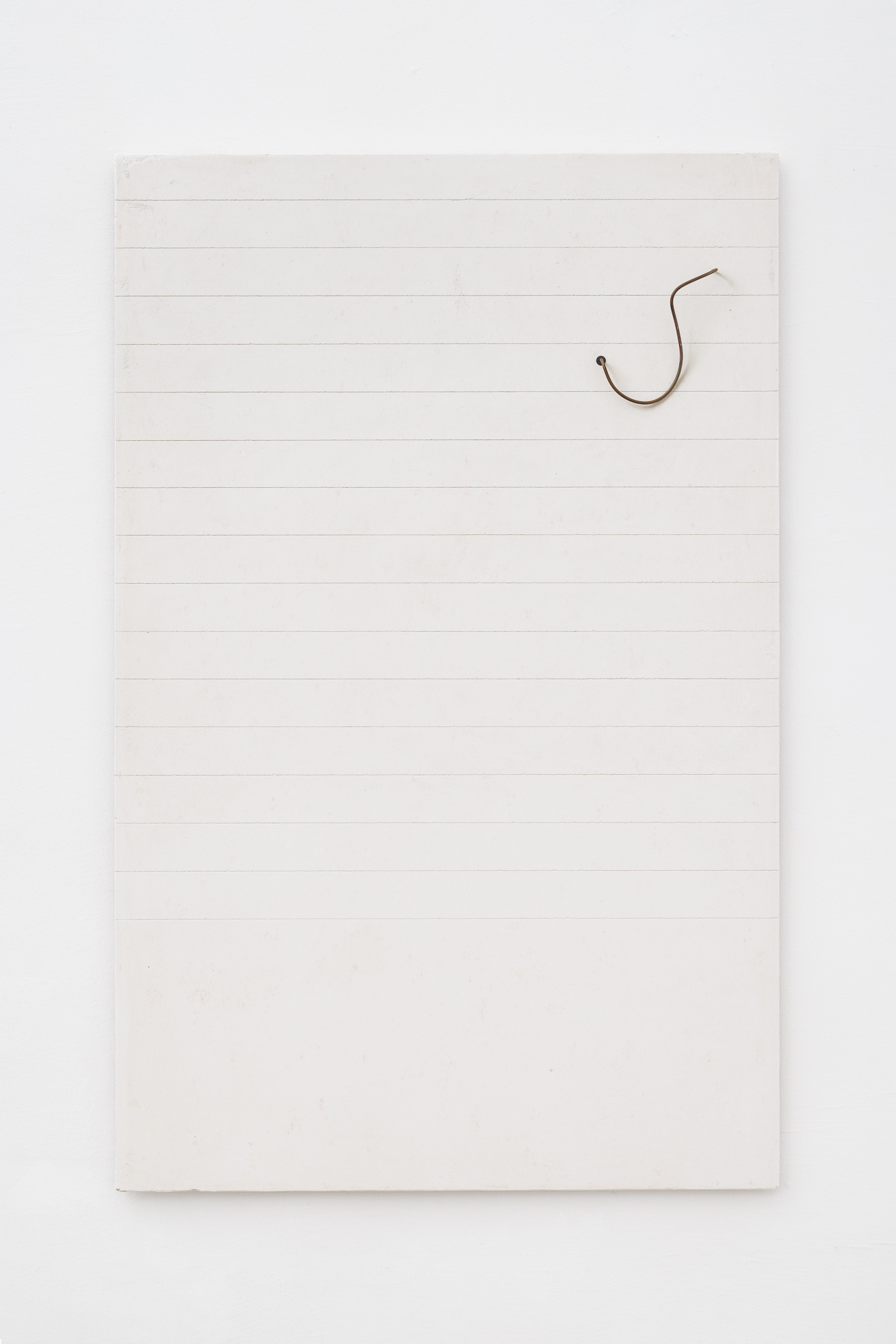
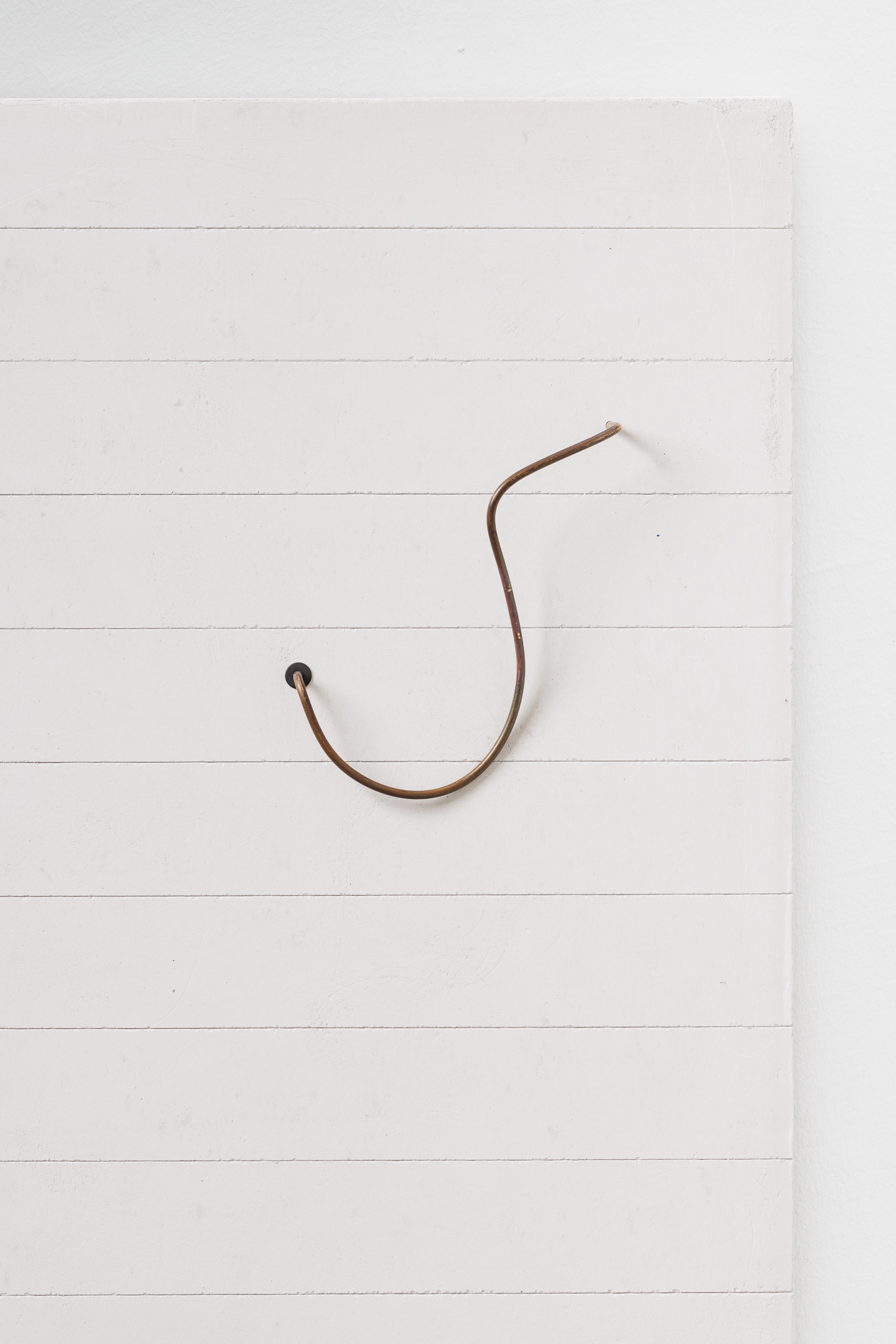

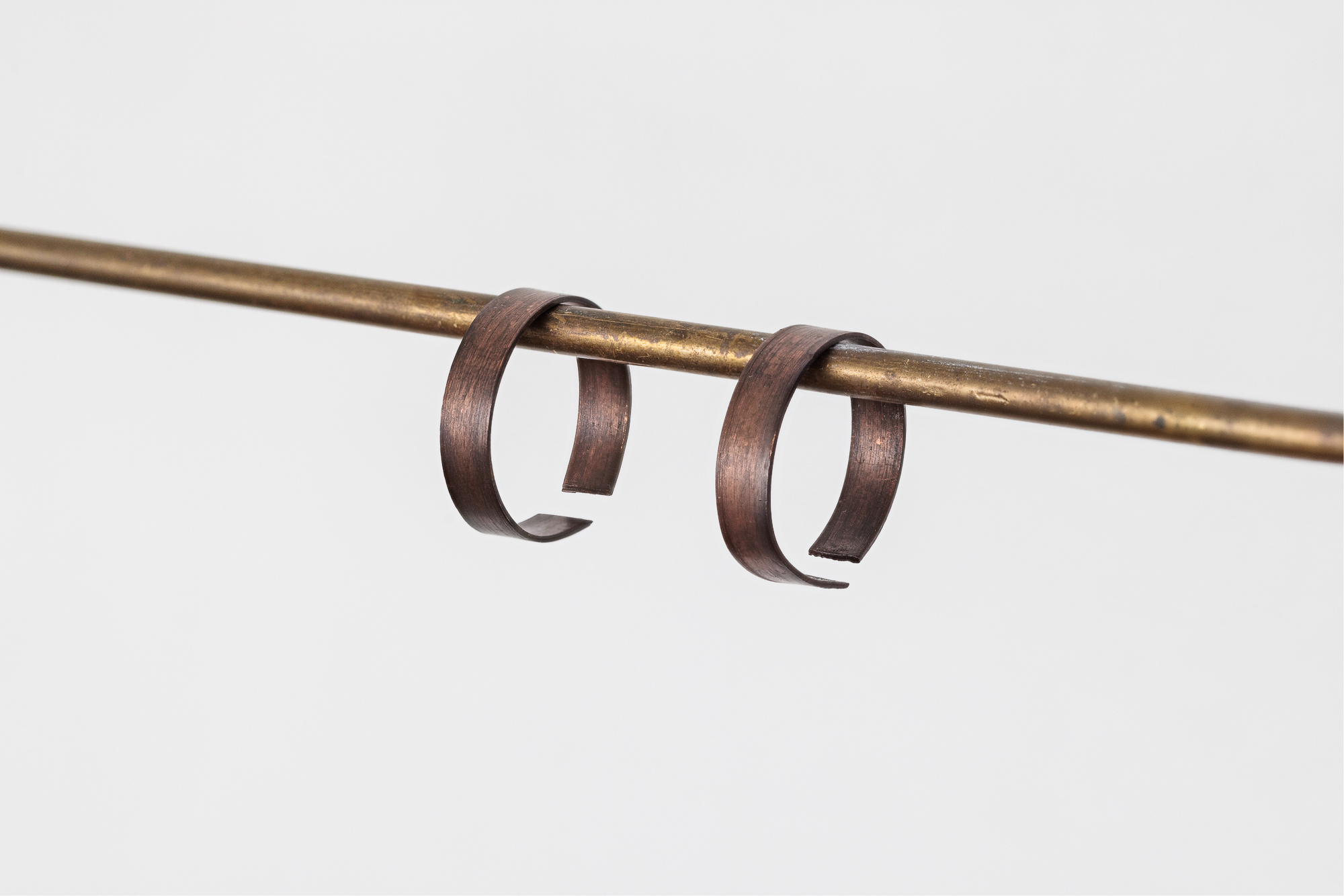
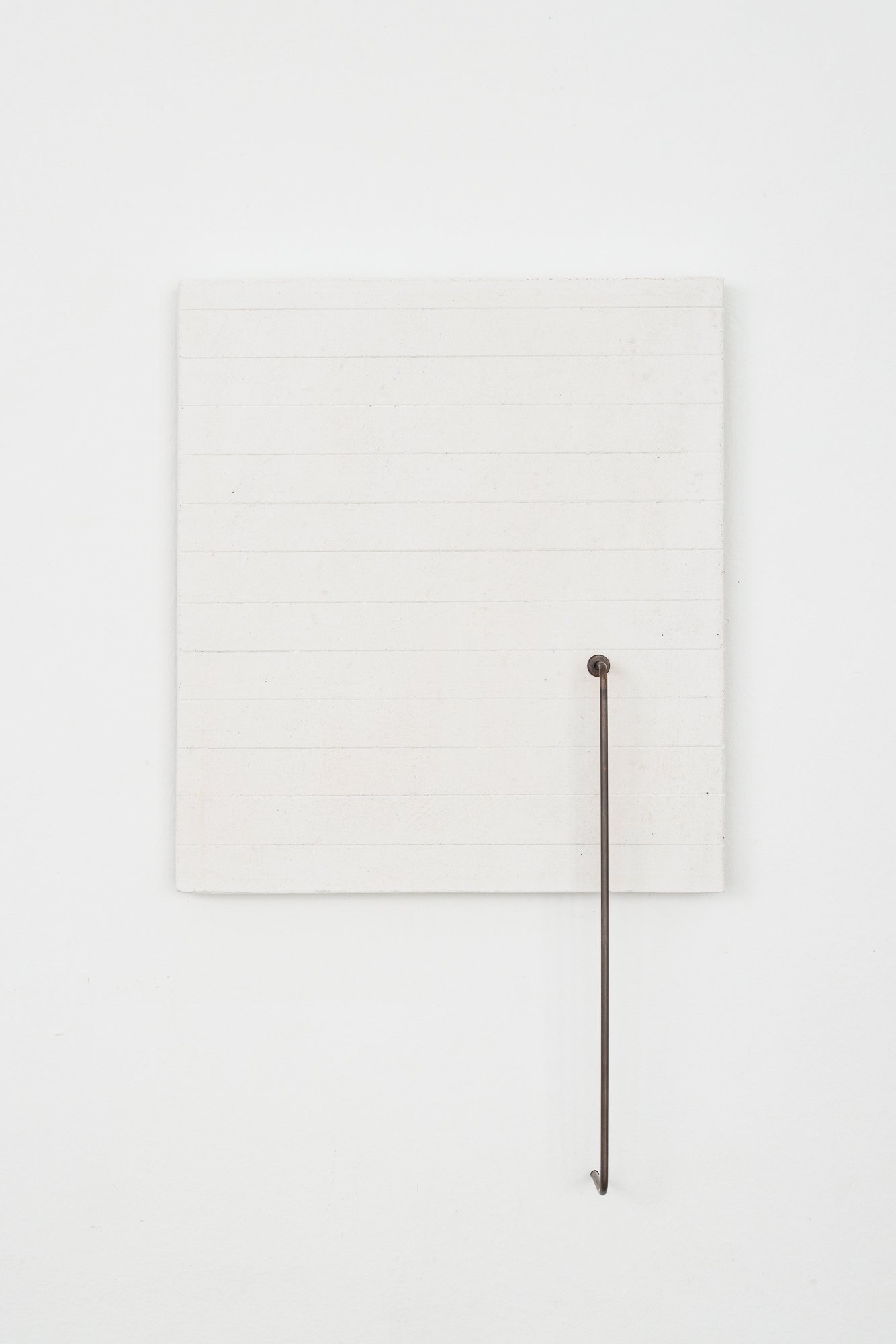
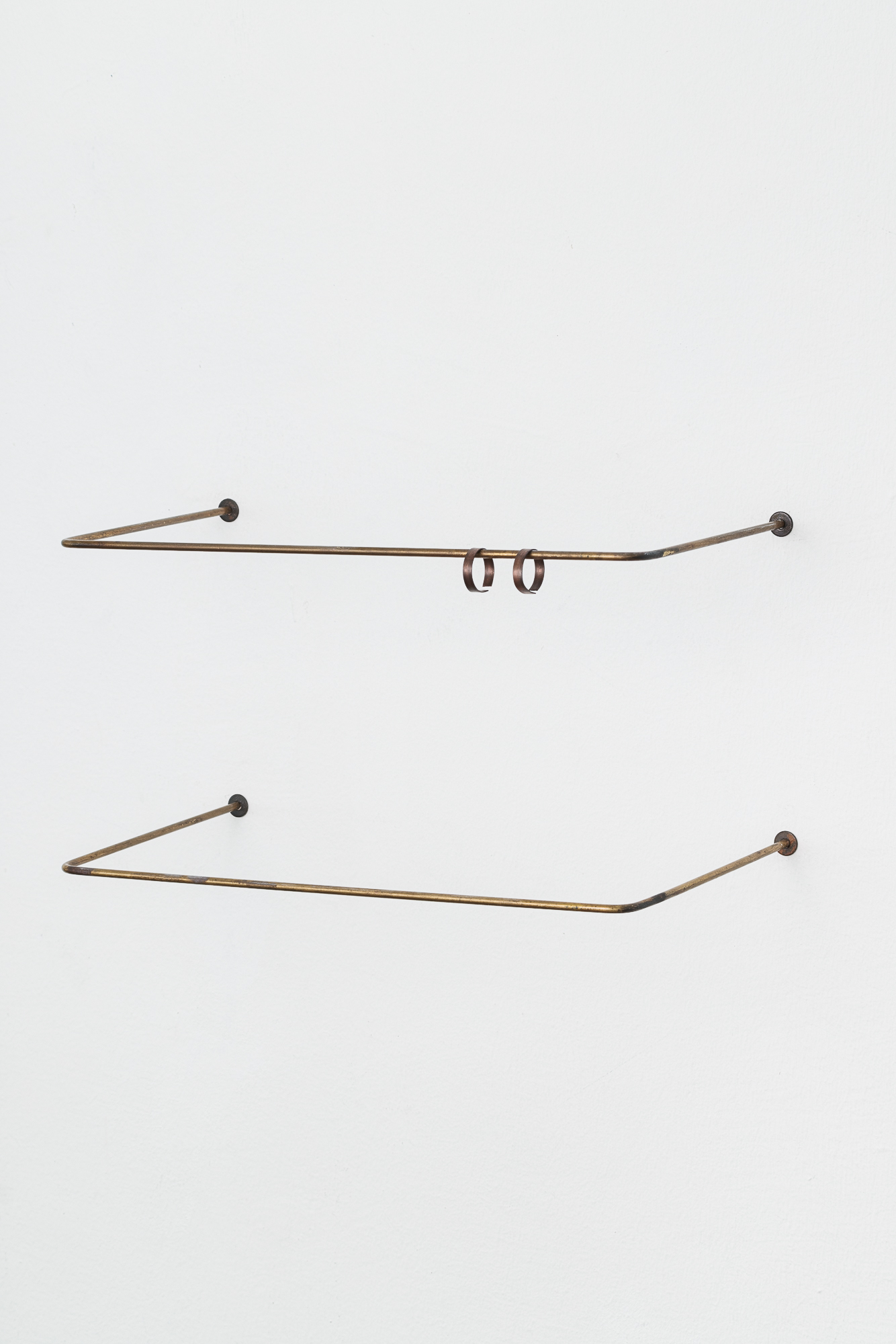
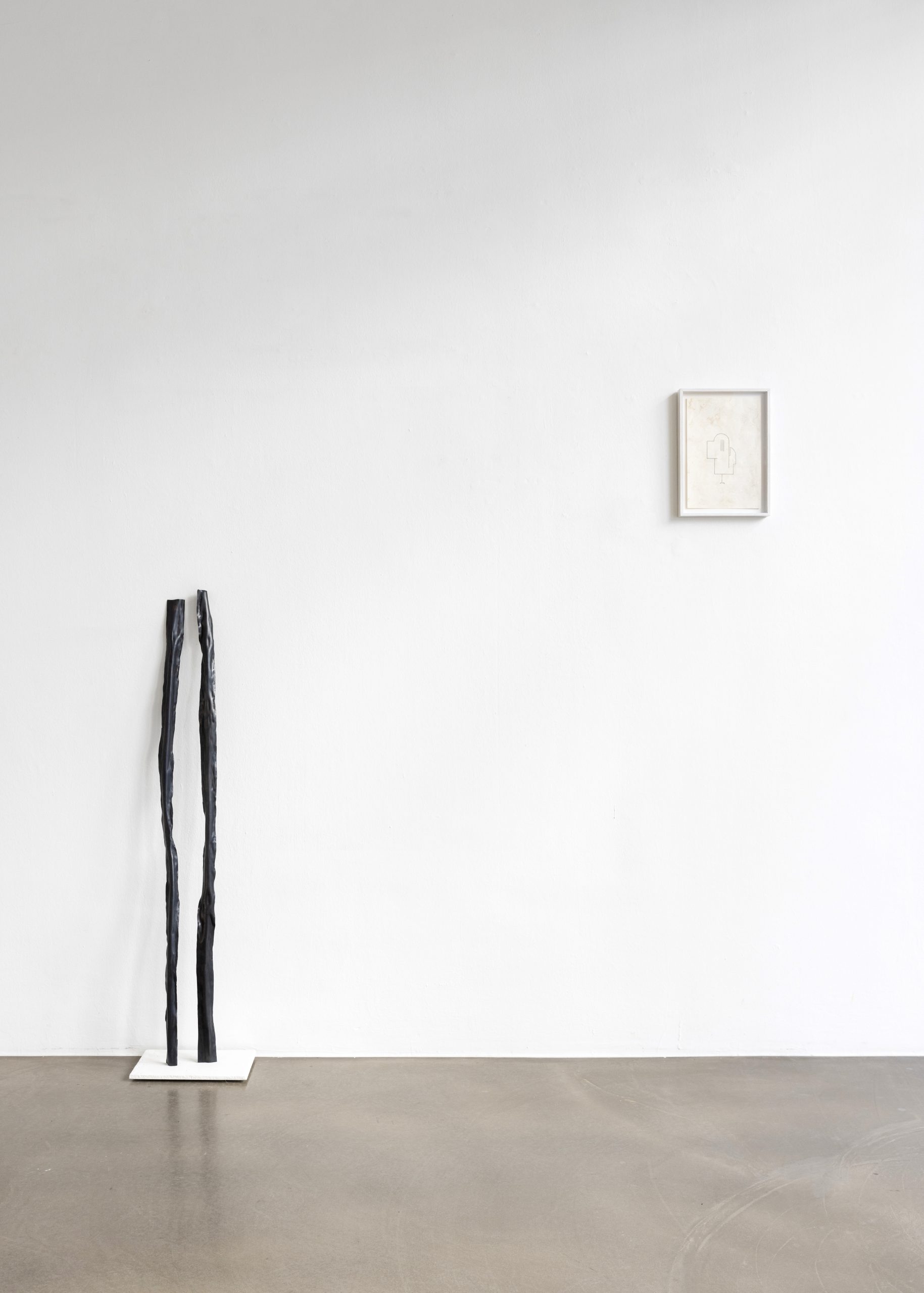
unit 4, 2023, Oxidaion auf Kupfer, freigelegte Gipskartonplatte / haus 3, 2020, Kohle auf geklopftem Rindenpapier
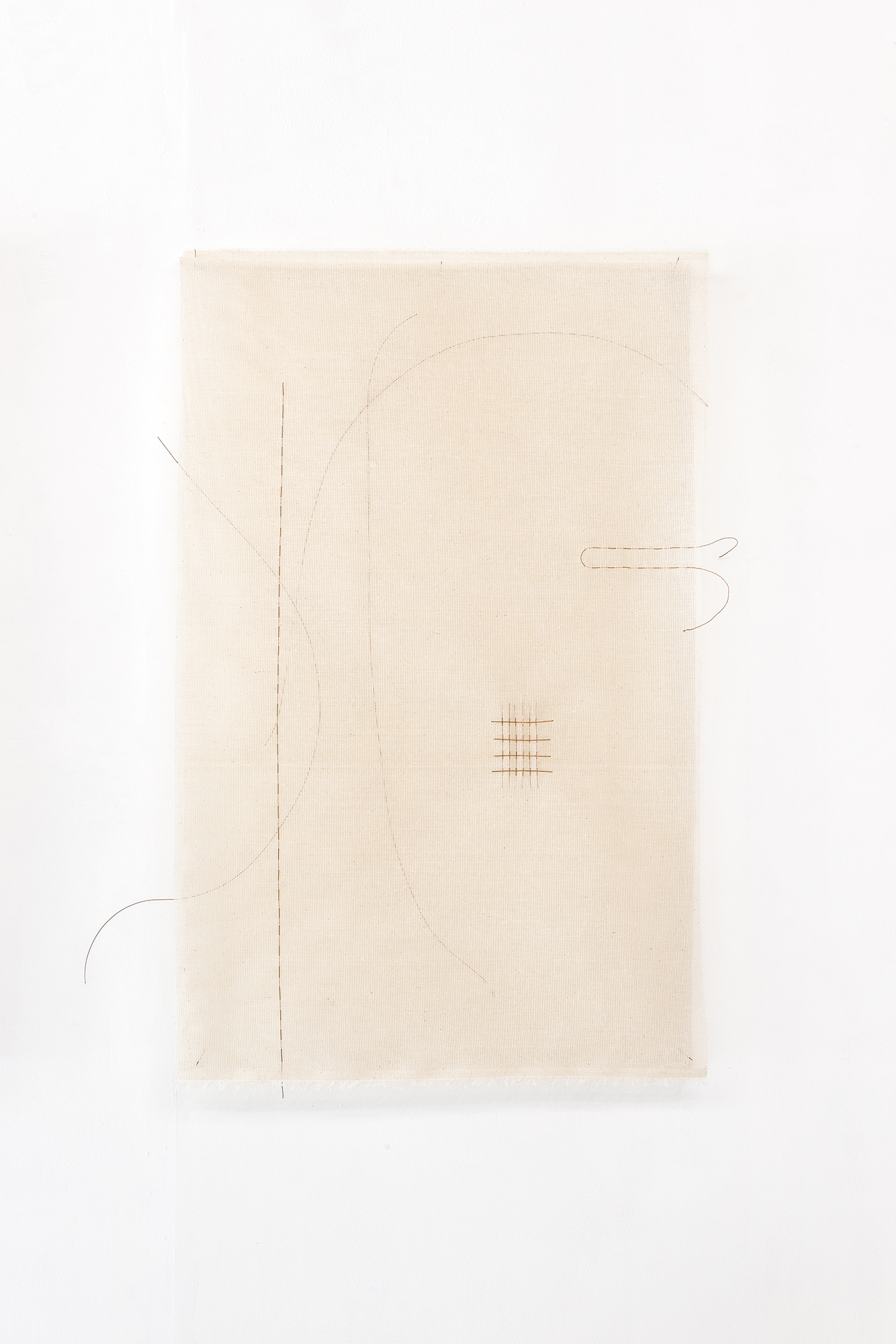
notations a, 2022, Naturgewebe, Kupfer, Stahl
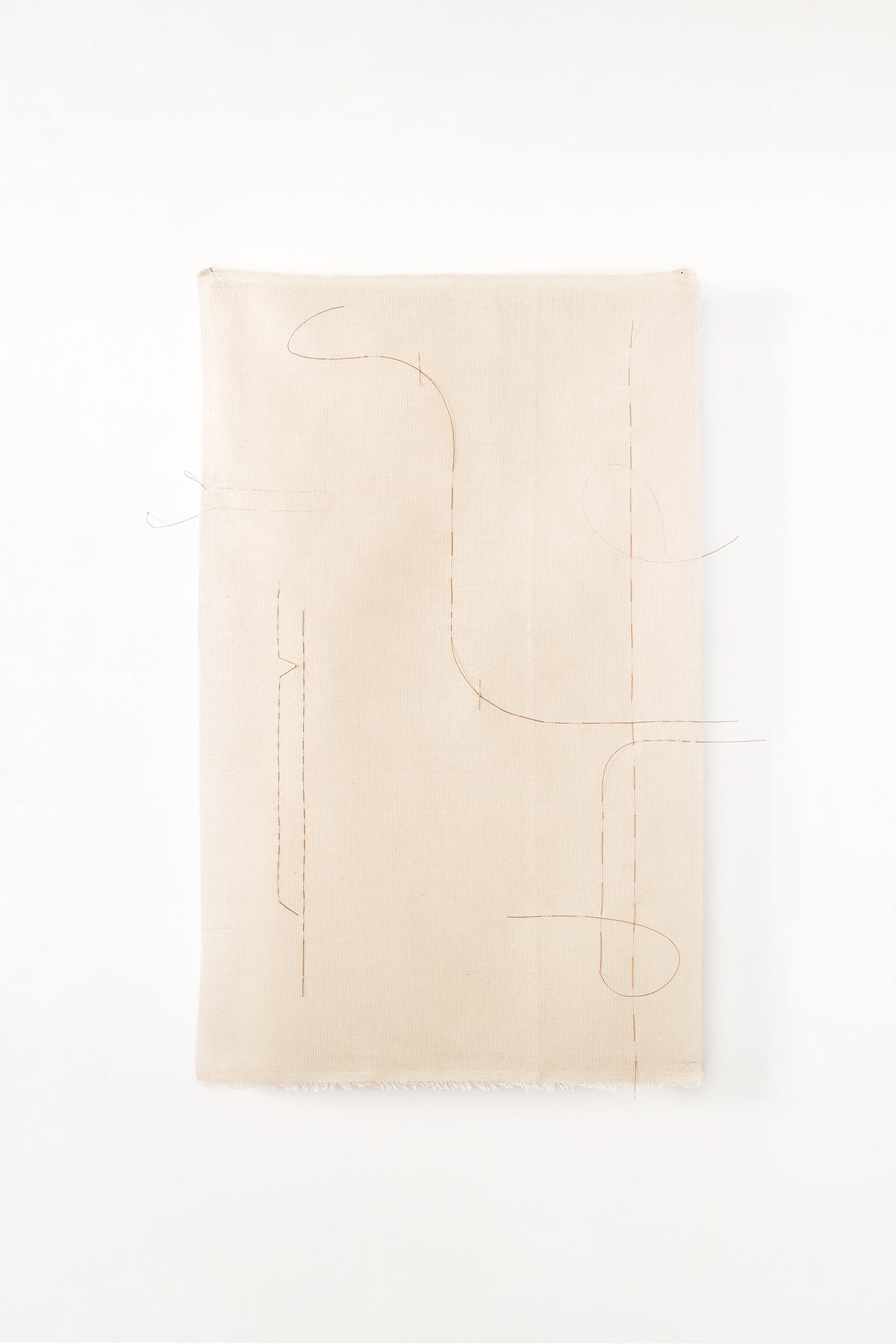
notations c, 2022, Naturgewebe, Kupfer, Stahl
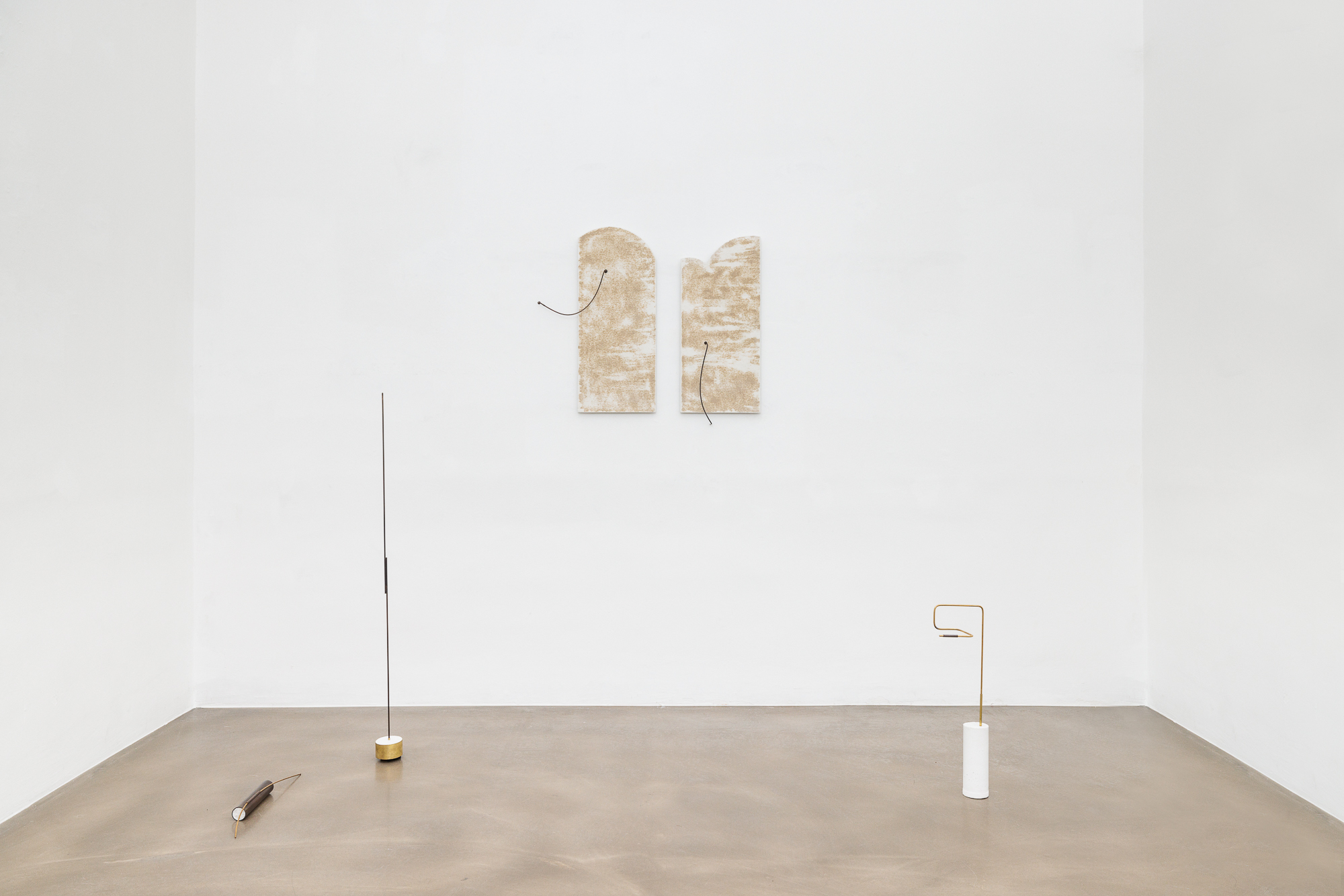
Exhibitionview: two limerick oysters
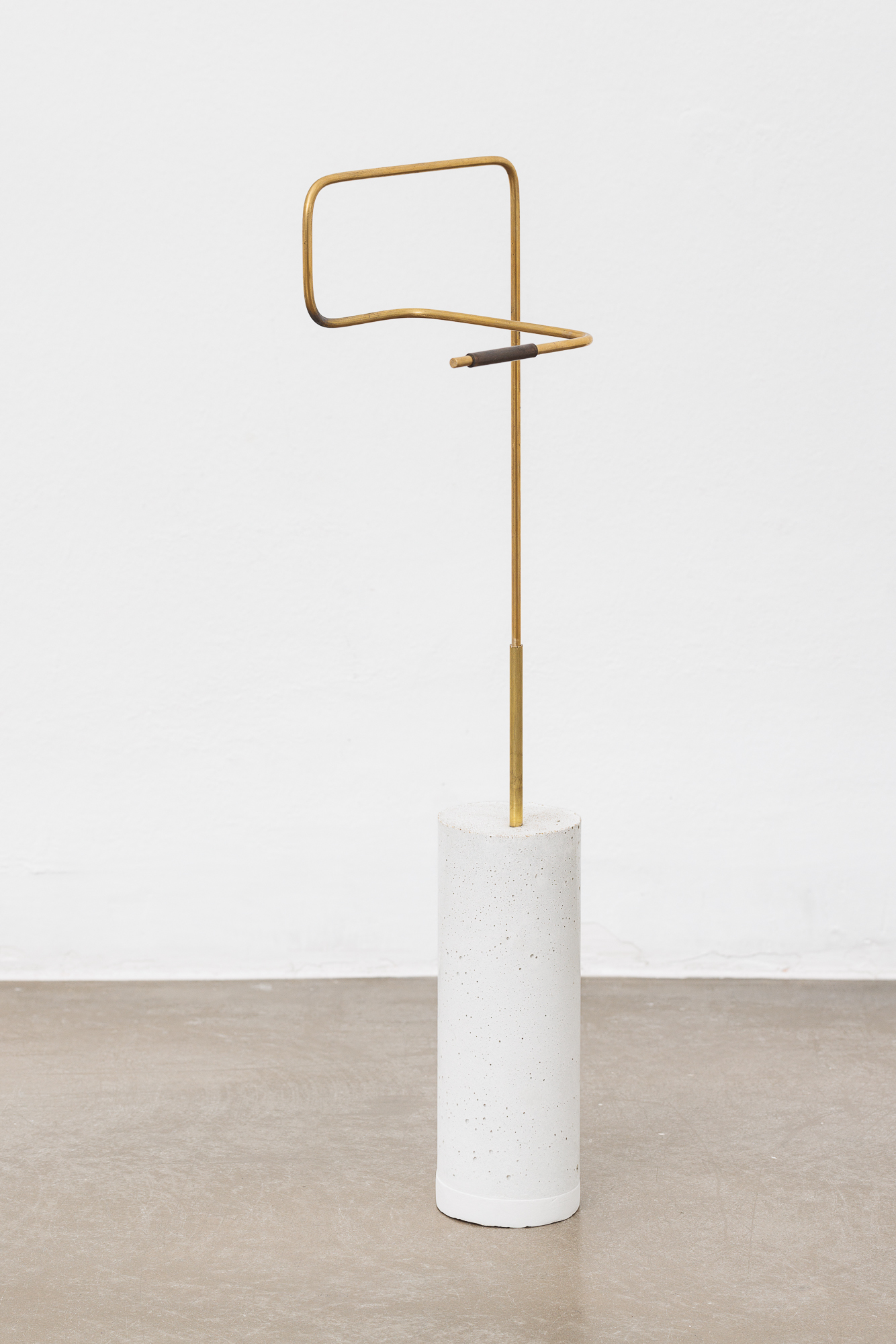
sculptural fragments, 2019-2024, teilweise brüniertes und oxidiertes Messing, Weißzement
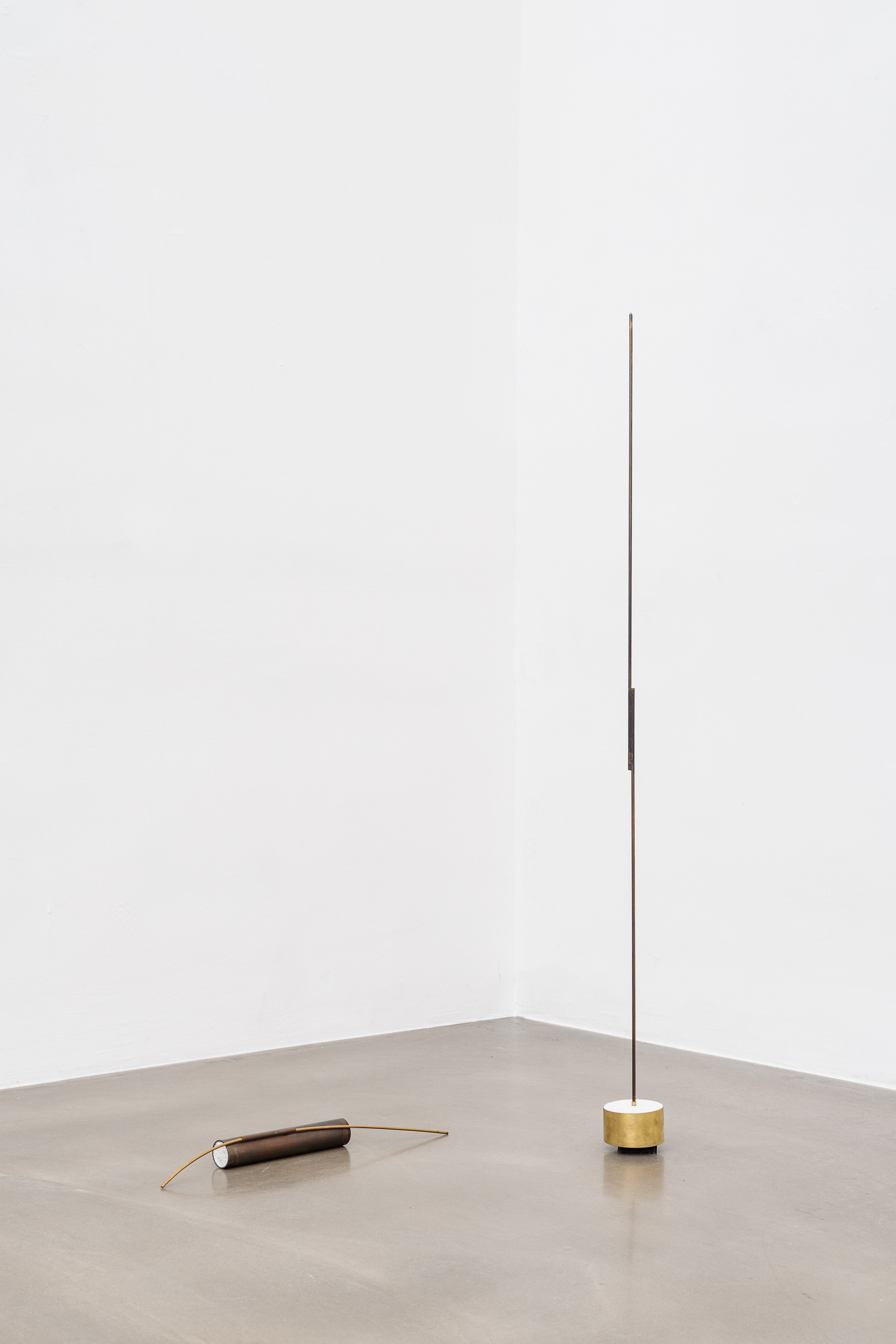
sculptural fragments, 2019-2024, teilweise brüniertes und oxidiertes Messing, Weißzement
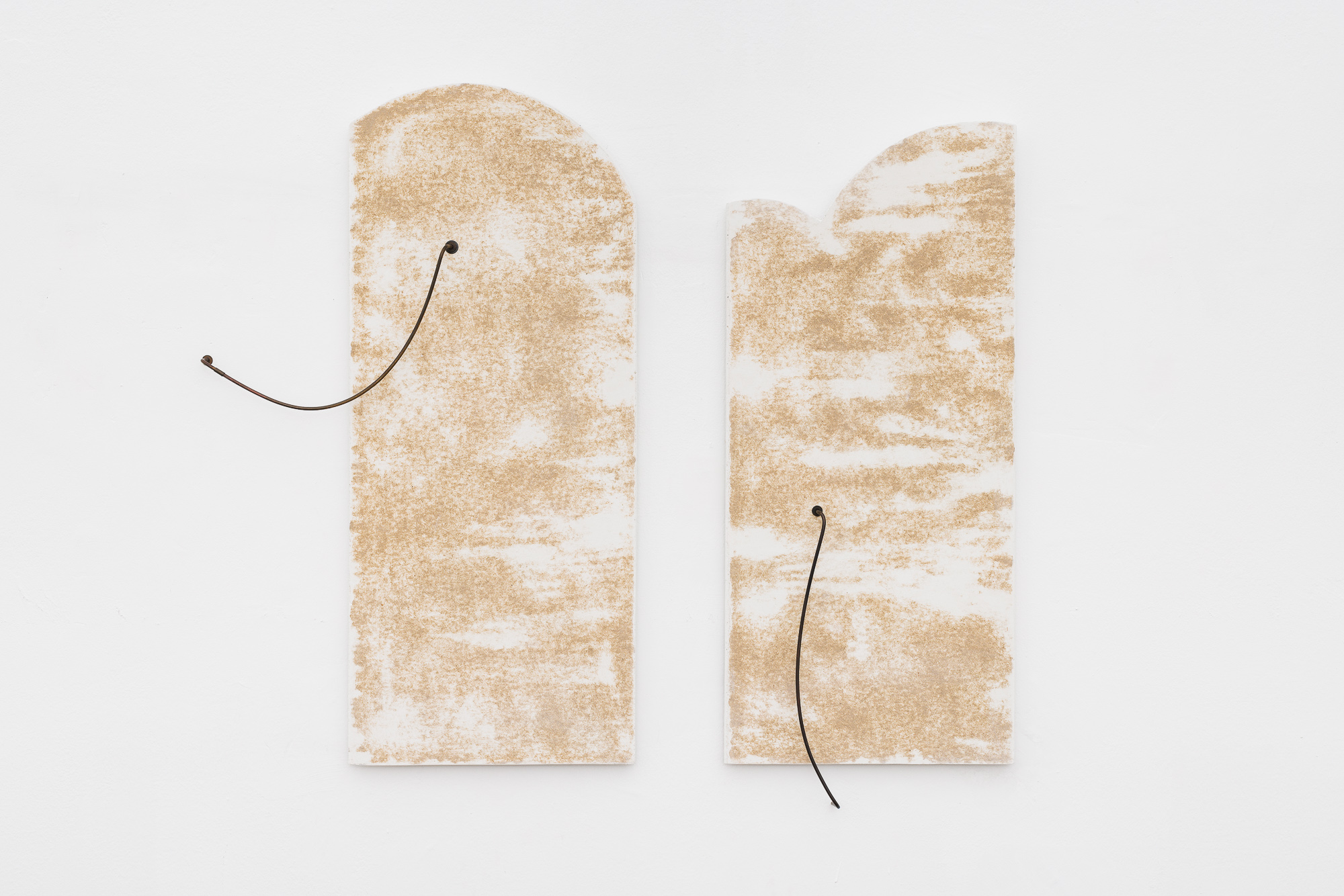
in brackets, 2019-2024, teilweise freigelegte Gipskartonplatte, brüniertes Messing, brünierter Stahl
Die skulpturalen Arbeiten von Melanie Ender entfalten sich auf Basis industrieller, Materialien, wie Rigipsplatten, Messingstangen, Kupferrohren oder Stahlblechen. Die Künstlerin bearbeitet die an sich marginalen Stoffe sorgfältig – schneidet, schält, entkernt, schleift, ordnet, und setzt die Dinge zueinander in Bezug. In ausgedehnten Permutationen und Rekombinationen manifestiert sich ein Interesse für unterschiedliche Etappen der Transformation sowie für die Entdeckung oder Enthüllung der Eigenheiten der jeweiligen Materialität.
Die Künstlerin akzentuiert diverse Oberflächen, legt Materialkerne frei oder lässt die Patina ihr unvorherseh- bares Oxidationsschauspiel vollführen. Dieser intensive Austausch mit Material spiegelt einerseits Melanie Enders Vorliebe für das Taktile, als auch für das Unvorhersehbare wider. Ihre Kunst wird zur Exploration von Wechselseitigkeit und Resonanz verschiedener Materialkörper. In der Serie notations beispielsweise verbindet Melanie Ender zwei sich überlagernde Gewebestrukturen mit Kupferfäden, die gleichsam in das Textil “zeichnen”. Die durchlässige Beschaffenheit des feinen Gewebes referenziert dabei auf die für Energie durchlässige Eigenschaft des Kupfers – und vice versa. So entstehen subtile narrative Verbindungen, zwischen verschiedenen Materialien und einzelnen Werkgruppen.
Eine Lösung von Enders Vexierspiel aus Verweisen und Anspielungen bedarf einer Neugier auf das Material – im Sinne eines technischen/chemischen Verständnisses, aber auch einer Art Materialempathie. Mit feinem Spürsinn für die inhärenten Qualitäten betrachtet die Künstlerin das Material als lebendiges Gegenüber, das gewisse Eigenschaften kommuniziert, aktiv die skulpturale Form beeinflusst und stetig in Bewegung ist. Skulpturen werden zu chiffrenartigen Zeichen oder transformieren zu dynamischen Raumskizzen. Als nur eine Möglichkeitsform im Raum stehen diverse skulpturale Elemente dabei oft nur temporär zueinander in Beziehung und lassen sich als offenen Prozess weiterdenken.
Melanie Ender‘s sculptural works unfold on the basis of industrial materials such as plasterboard, brass rods, copper pipes or sheet steel, which the artist carefully processes – cutting, peeling, coring, sanding, (re)arranging and relating to one another. Extensive permutations and recombinations manifest an interest in different stages of transformation and in discovering or revealing the peculiarities of the respective materiality.
The artist accentuates various surfaces, exposes material cores or allows the patina to perform its unpredicta- ble oxidation spectacle. This intensive exchange with material reflects Melanie Ender‘s preference for both the tactile and the unpredictable. Her art becomes an exploration of the reciprocity and resonance of different material bodies. In the series notations, for example, Melanie Ender combines two overlapping fabric structures with copper threads that „draw“ into the textile. The permeable nature of the fine fabric references the energy- permeable property of the copper – and vice versa. This creates subtle narrative connections between different materials and individual groups of works.
A solution to Ender‘s puzzle of references and allusions requires a curiosity about the material – in the sense of a technical/chemical understanding, but also a kind of material empathy. With a keen sense for the inherent qualities, the artist views the material as a living counterpart that communicates certain properties, actively influences the sculptural form and is constantly in motion. Sculptures become cipher-like signs or transform into dynamic spatial sketches. As only one possible form in space, various sculptural elements are often only temporarily related to each other and can be thought of as an open process.
all photos: ©kunstdokumentation.com
except nr.7: ©Eva Kelety